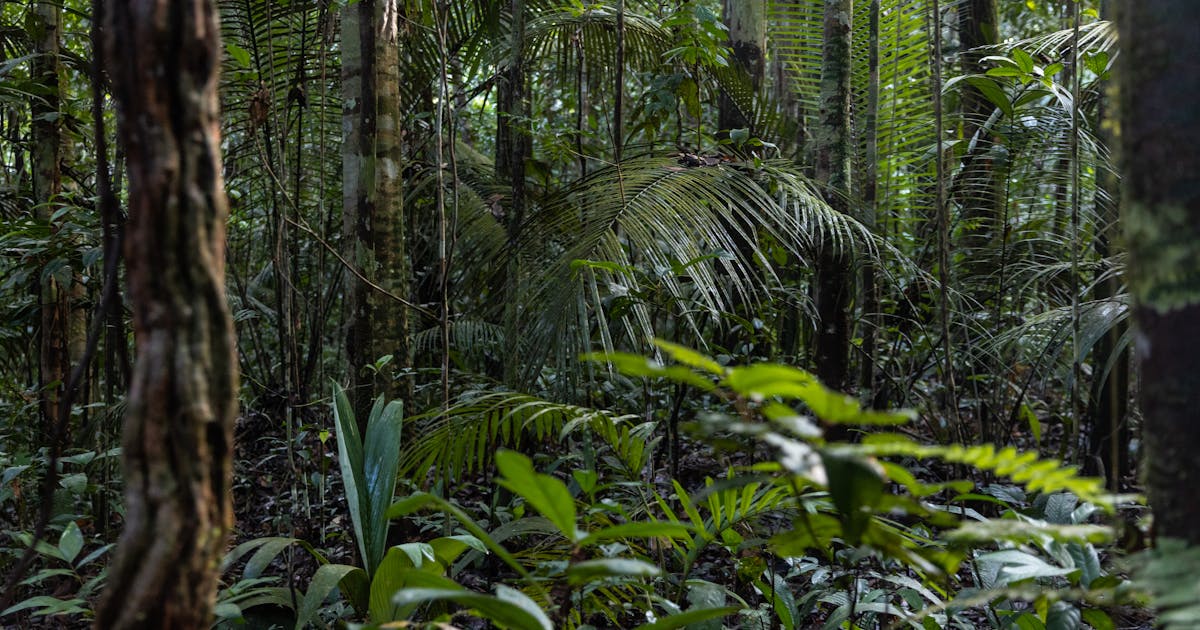Earth has lost 2 billion metric tons of “irrecoverable carbon” since 2018 — an amount greater than the United States’ annual greenhouse gas emissions.
That’s according to research updates from Conservation International scientists who coined the term in a groundbreaking paper. Their work mapped ecosystems that function as massive vaults of planet-heating carbon, which, if emitted into the atmosphere, could not be restored by 2050 to prevent the worst impacts of climate change.
New findings show some of these essential carbon reserves have been lost — underscoring the need to halt deforestation and expand protected areas, said Conservation International scientist Allie Goldstein, who co-led the research.
“In order to stem catastrophic climate change, irrecoverable carbon needs to remain stored in rainforests, mangrove forests, peatlands and other ecosystems,” she said. “Humanity simply can’t afford to destroy these places.”
Research updates also found reasons for hope.
“There were bright spots in the data,” Goldstein added. “Around the world, new protected areas have been created — and they are storing millions of metric tons of irrecoverable carbon.”
Research updates found:
- Australia, the United States and Canada lost the most irrecoverable carbon (respectively, 7.6 percent, 2.3 percent and 1.4 percent) between 2019 and 2022. In each case, mega wildfires were a major driver of forest loss. Other counties with significant irrecoverable carbon losses included Indonesia (1.3 percent), Brazil (1.2 percent) and Russia (1.1 percent).
- Overall, lands managed by Indigenous and local communities lost less irrecoverable carbon than government-run protected areas. However, Indigenous and local community-managed lands lost 1.2 billion metric tons of irrecoverable carbon as they faced ongoing pressure from agriculture and development. Those losses were greatest in Russia, Indonesia and Australia.
- 1.3 billion metric tons of irrecoverable carbon was lost within national parks and other protected areas between 2019 and 2022, despite their protected status. Mining and logging, both legal and illegal, are common causes of deforestation within protected areas.
- Despite the losses, protected areas remain a powerful tool for safeguarding irrecoverable carbon. At least 7,000 new protected areas have been created around the world since 2020 — and they sequester 163 million tons of irrecoverable carbon. For example, Australia dedicated the Ngadju Indigenous Protected Area, a vast swath of land roughly the size of Switzerland that has been inhabited and shaped by the Ngadju people for 50,000 years. The area holds 9.2 million metric tons of irrecoverable carbon — making it the single largest addition to the protection of the planet’s irrecoverable carbon since 2020. And with the land’s protected status, the Ngadju will be better equipped to address threats to their territory, like mining, wildfire and invasive species.
While the addition of new protected areas in recent years is promising, more needs to be done, Goldstein said. Roughly a quarter of the world’s irrecoverable carbon is already located within protected areas — increasing that amount by just 5 percent in key areas would keep a whopping 75 percent of irrecoverable carbon out of the atmosphere.
Goldstein added that governments are becoming increasingly aware that strengthening protections of ecosystems with high levels of irrecoverable carbon — as well as supporting Indigenous and community-led conservation measures — is essential to meeting global climate and biodiversity goals, like protecting 30 percent of Earth’s land by 2030.
Informed by the research, Conservation International and French government agencies have partnered with local organizations to safeguard areas with high concentrations of irrecoverable carbon and biodiversity. Last week, they announced a €2.5 million investment (in addition to a previous €13 million commitment) aimed at protecting 235 million metric tons of irrecoverable carbon in Bolivia, Ecuador, Guyana and Peru.
Further reading:
Mary Kate McCoy is a staff writer at Conservation International. Want to read more stories like this? Sign up for email updates. Also, please consider supporting our critical work.
